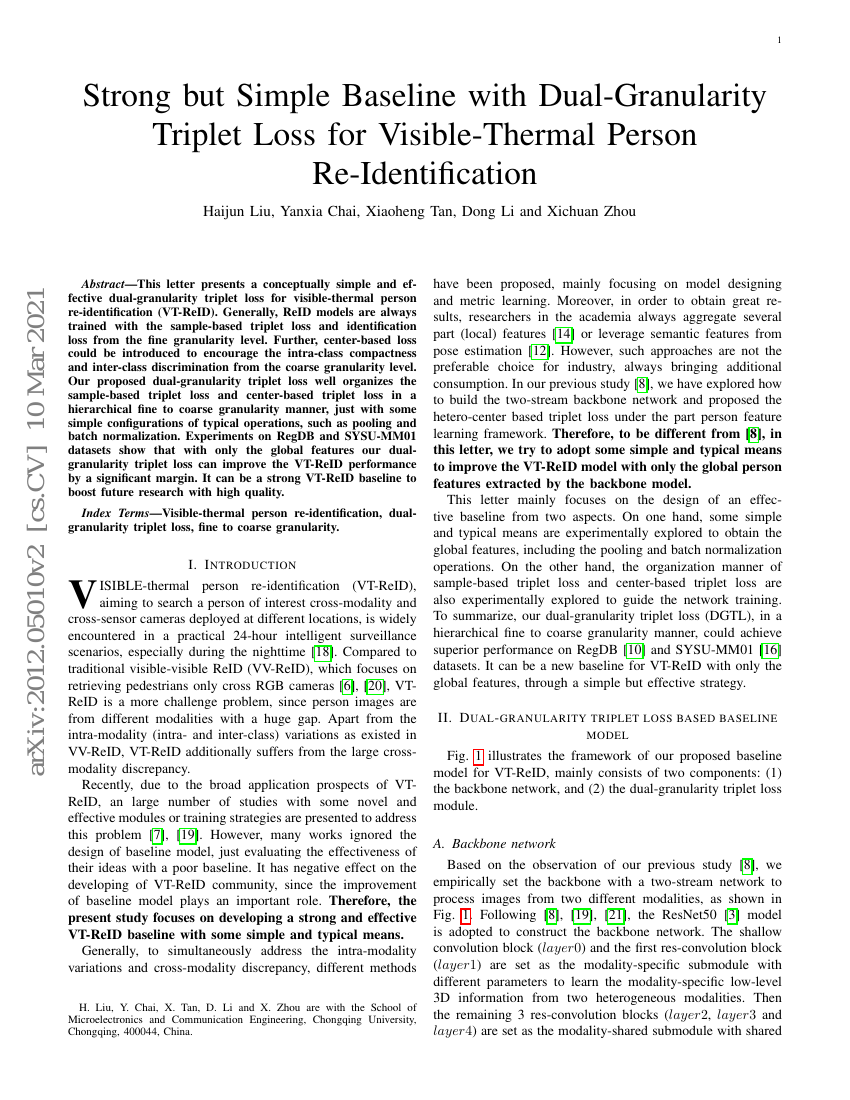Command Palette
Search for a command to run...
Strong but Simple Baseline with Dual-Granularity Triplet Loss for Visible-Thermal Person Re-Identification
Liu Haijun ; Chai Yanxia ; Tan Xiaoheng ; Li Dong ; Zhou Xichuan

Abstract
In this letter, we propose a conceptually simple and effectivedual-granularity triplet loss for visible-thermal person re-identification(VT-ReID). In general, ReID models are always trained with the sample-basedtriplet loss and identification loss from the fine granularity level. It ispossible when a center-based loss is introduced to encourage the intra-classcompactness and inter-class discrimination from the coarse granularity level.Our proposed dual-granularity triplet loss well organizes the sample-basedtriplet loss and center-based triplet loss in a hierarchical fine to coarsegranularity manner, just with some simple configurations of typical operations,such as pooling and batch normalization. Experiments on RegDB and SYSU-MM01datasets show that with only the global features our dual-granularity tripletloss can improve the VT-ReID performance by a significant margin. It can be astrong VT-ReID baseline to boost future research with high quality.
Code Repositories
Benchmarks
| Benchmark | Methodology | Metrics |
|---|---|---|
| cross-modal-person-re-identification-on-regdb | Dual-granularity-triplet-loss | mAP(V2T): 73.78 rank1(V2T): 83.92 |
Build AI with AI
From idea to launch — accelerate your AI development with free AI co-coding, out-of-the-box environment and best price of GPUs.